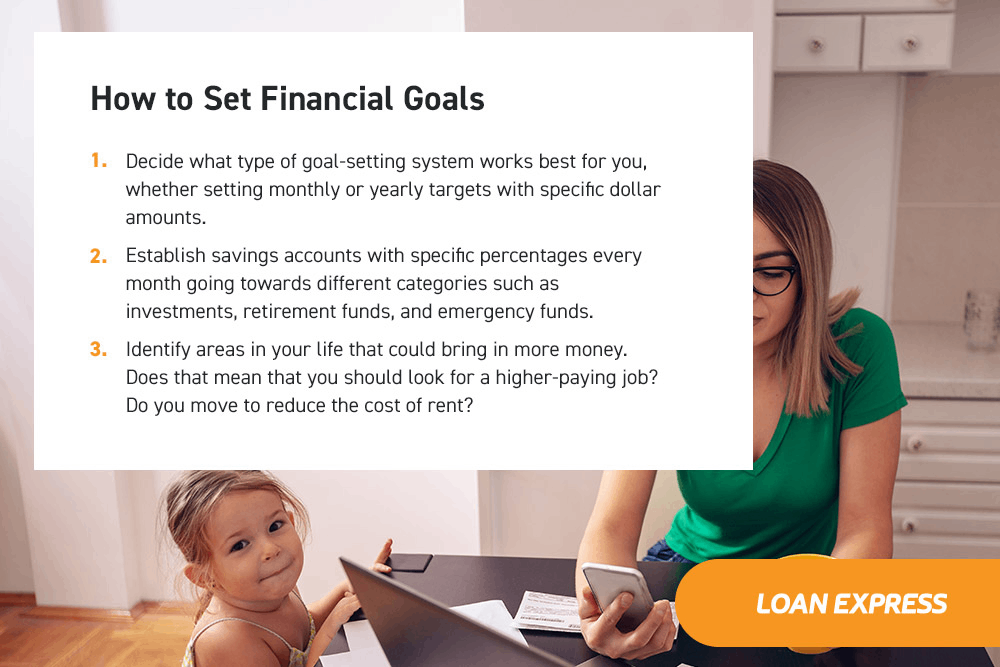How to Plan a Budget if You Are a Single Parent
As a single parent, you have to work hard at managing your money. You’re the only one in charge of deciding how much goes into savings and what bills are paid first. If you feel like your money is always disappearing before it even hits your account, then this blog post will be just what you need! It contains budgeting tips geared toward single parents to help them create a winning budget.
Financial Tips for Single Parents: Keep Track of Accounts
One of the best ways to get ahead as a single parent is by staying on top of your finances. This means monitoring your checking and savings accounts for fraud, incorrect charges or fees, and keeping an eye out for identity theft in credit accounts that you may have. Doing so will help ensure that there are no surprises when it comes time to calculate monthly bills.
Another way to track your spending is to utilize a budget app like Mint to manage your upcoming bills, track spending, and receive alerts to suspicious activity!
Learn about Potential Tax Credits
With a family to take care of, it can be challenging to make ends meet. That’s why you should educate yourself on the Canada Revenue Agency tax relief and benefits available to parents. For example, the Canada child benefit (CBB) is a monthly payment from the CRA offered to eligible families for children under 18. Eligible recipients can receive an additional monthly allowance for any disabled and related provincial programs, if applicable. To learn more about potential tax credits, visit Canada.ca.
Effective Budgeting Tips for Single Parents
As the head of your household, you need to do everything in your power to make sure everyone is taken care of. That means you are solely responsible for all financial obligations that come with food, utilities, internet, rent or mortgage, transportation, and various other bills that come with day-to-day life. The following tips should help you ensure your single-parent budget is top-notch.

Determine What You Owe
The first step in consolidating your budget is identifying how much you owe to lenders or monthly services.
- Create a chart for all of your debts, including any car loans, mortgage payments, and credit card debt.
- List each debt and the amount you owe.
- Next, list every payment due by month (cell phones, car insurance, utility bills etc.) so those are easier to find.
- Lastly, set reminders when specific bills need addressing. This could be an alert on your phone (or better yet, automatic payment through your online banking app!), so they’re not forgotten.
Pay off the debts that have the highest interest rate
In addition to creating a list of what you owe, add the total balance left to be paid on all of these debts, as well as the percentage rate you are paying. This can help you prioritize debts that have higher interest rates. You’ll save big by paying off your high-interest rate debts first. Plus, the money you spend on interest could be better spent elsewhere!
But if you’re struggling to pay off your high-interest rate debts or looking for a way to break them up, work with paying the debt that has the lowest balance. Your mind will find it easier and more rewarding when you see progress in paying down some of those smaller balances.
Pay more than the minimum payment
Financially, it can be tempting to try and save money by paying less than what you owe. However, this strategy is short-sighted because of the long-term costs accumulated over a lifetime of high interest rates.
Paying more than your minimum payment will help reduce the total amount owed and lower future monthly costs resulting from increased credit scores, which gradually reduces loan balances per month.
Budget Your Monthly Expenses
Now that your spending habits have been identified, you can create a budget for your personal finances. The goal is to end each month with more money coming in than going out! Popular methods for making this happen include the 50/30/20 method, zero-based budgeting, and the envelope system.
50/30/20 Method
The 50/30/20 budgeting method is a straightforward way to keep your money in check. The first tier of the method includes necessities like rent, child care, and food costs which total 50% of one’s income each month. The 30% consists entirely of non-necessary expenses such as movies and entertainment that can be cut down if necessary. The remaining 20% goes towards savings for emergency funds, retirement plans, and other financial priorities, including debt repayment.
Zero-Based Budgeting
A zero-based budget is a way to track your money so that all expenses are accounted for. Debt repayment can be integrated into this plan, as it allows an individual with debt to live life on their terms without having financial worries. Zero-based budgeting allows users to know how much they owe and what payments go toward repaying loans instead of other things like groceries, rent, etc.
The Envelope System
With the envelope system, users set limits on how much they’ll spend in each category. This could be anything from kids toys and clothing to groceries and subscriptions. Label a series of envelopes with the category name and put an amount that equals your spending limit for the month. You can utilize this money until it’s gone, but once it is, you have to wait until next month to spend in that category. Naturally, this doesn’t work for bill payments or home repairs (that’s where you can turn to Loan Express)!
As the person who manages all financial matters for their family, it’s wise to be cautious about where each dollar goes. If these methods seem daunting, start with something as simple as shopping smart:
- write down what needs purchasing (and how much)
- compare prices before making any purchases
- use coupons or discount codes and buy things during sales periods instead
- avoid impulse buys
- purchase second hand when possible
Set Financial Goals

Setting financial goals is a tough job. It’s so easy to get overwhelmed by all the decisions you have to make, and it often feels like there isn’t enough time in your day! The following three steps will help simplify things for you:
- Decide what type of goal-setting system works best for you, whether setting monthly or yearly targets with specific dollar amounts.
- Establish savings accounts with specific percentages every month going towards different categories such as investments, retirement funds, and emergency funds.
- Identify areas in your life that could bring in more money. Does that mean that you should look for a higher-paying job? Do you move to reduce the cost of rent?
Increase Your Net Worth
To increase net worth, one must first save. To make it easier for yourself to meet the goal of saving money, set up automatic transfers from checking account to savings account each month. This way, you will never have access to that money again until you reach a specific savings threshold. The frequency of these transfers should also coincide with when bills come due.
At Loan Express, we offer loans to individuals with a wide range of credit scores! As long as you are older than 19 with appropriate documents, secure employment and an active banking account, you are eligible. We have fast loans throughout Canada to ensure that there is a convenient, fast line of credit made available for those who need it most. Get up to $1500 in under one day at Loan Express wherever you live in Canada! Apply Now!
Disclosure
Total cost of borrowing is $14.00 per $100 lent for a 14-day loan.
Payday Loans are High-Cost Loans.
- BC Licence #50028
- AB Licence #327001
- SK Licence #100056
- MB Licence #39281 (Exp. Oct 18, 2026)
- ON Licence #4716499
- NB Licence #200001546
- NS Licence #202645507
- NL Licence #20-23-LO073-1
